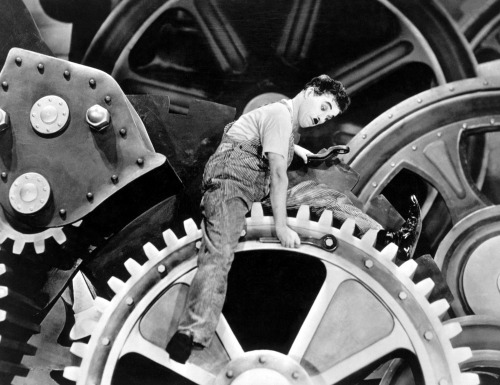5 Black And White Films You Should Know About

1."Citizen Kane" Directed by Orson Welles
"Citizen Kane" has been known to be a masterpiece among filmmakers and critics, topping many film charts as oen of the greatest films ever made. "Citizen Kane" tells the story of a multimillionaire in the news publishing industry, a character loosely based on William Randolph Hearst. Similarities between the two includes the name of the newspaper The New York Inquirer and The New York Journal, the mansion that contains priceless art and their use of yellow journalism. The film is told through the words of a journalist looking for the answer to the great mystery that is "Rosebud", the last word muttered by the eccentric millionaire. The film has been praised for its narrative structure, cinematography and music.
2. "Modern Times" Directed by Charlie Chaplin
Who can forget the Tramp with his Derby hat and mustache? "Modern Times" is Charlie Chaplin's last silent film and last protest against the new era of "talkie" films. The film depicts the Tramp struggling against the Great Depression and against machinery under the Industrial Age. One of the most iconic scenes from the film is when the Tramp tests out a feeding machine in the factory that raises worker efficiency by saving time. Take a look at the scene below:
3. "Sunset Blvd." Directed by Billy Wilder
"Sunset Blvd." is a film that blurs the lines between fiction and reality, both in cinematography, production design and character development. The silent film star Norma Desmond hides in her mansion believing that she's a star that never goes out while the outside world, now the era of "Talkies", has already abandoned the old star. The narrative structure of having (spoilers) the dead protagonist (spoilers) narrate the film was never heard of until Sunset Blvd.
4. "Some Like It Hot" Directed by Billy Wilder
"Some Like It Hot" symbolized a new era of movie making that does not categorize films into just one genre. "Some Like It Hot" cleverly mix together elements from a gangster spoof film, a romantic comedy, a musical and a screwball comedy. More importantly, it touched upon controversial themes like homosexuality and drag costumes. The film tells the story of two musicians escape from mobs by dressing up as female musicians and performing with an all-female band. It's sexy, it's funny, it has Marilyn Monroe. Here is a video of her singing "I Wanna Be Loved By You" in the film:
5. "Psycho" Directed by Alfred Hitchcock
"Psycho" is known as the beginning of horror films, the best work of the father of horror films Alfred Hitchcock. The famous shower scene that depicts the killing of Janet Leigh's character perfectly represents the achievement in cinematography the film has made. The scene runs around 3 minutes and features over 77 camera angles including extreme close ups and close ups that create the suspenseful and intense atmosphere. Even if you've never seen the scene itself, you must've heard of the chilling screeching of violin that is as symbolic as its visual images. Here is the famous shower scene:
Reach Staff Reporter Michelle Man here.



